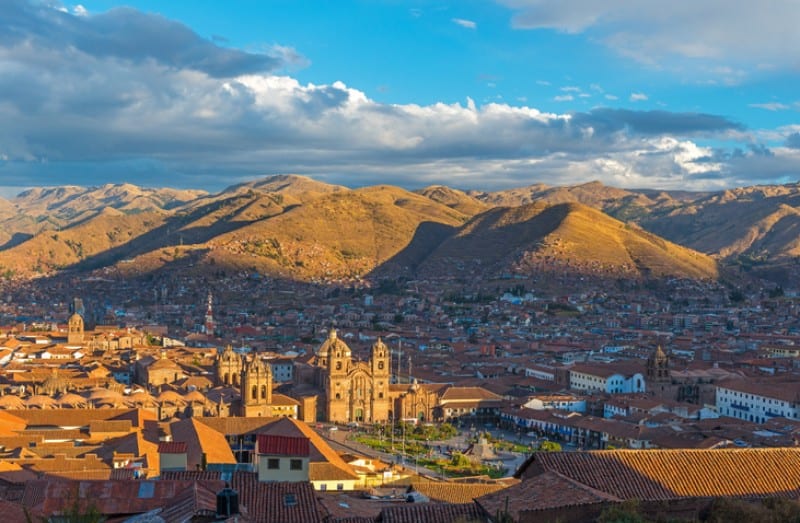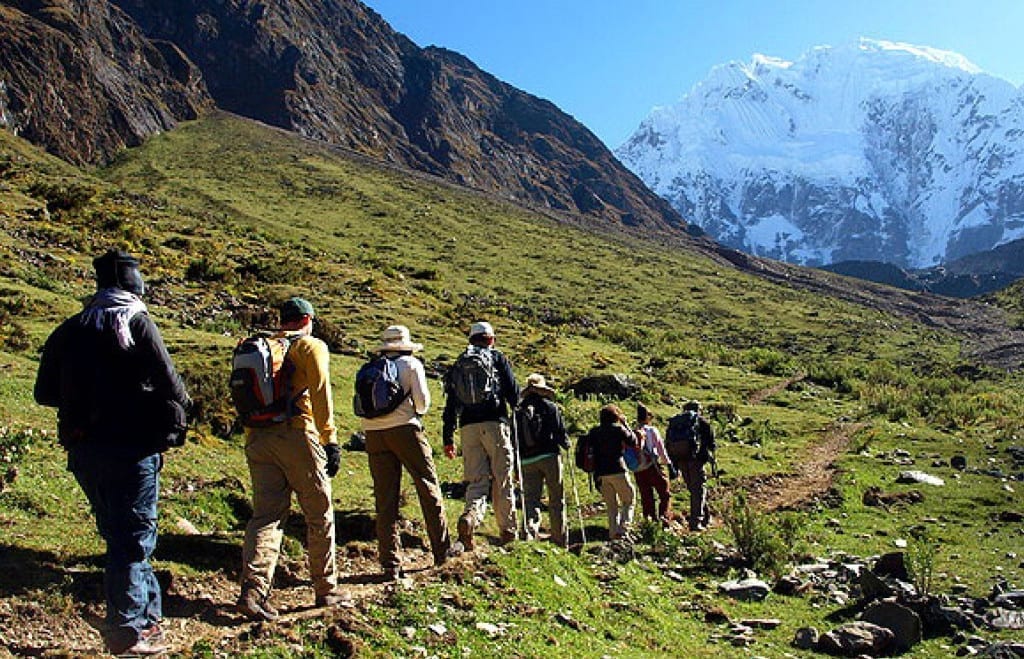Is The Inca Trail Dangerous?
James Bustamante is Native to New York but born to Peruvian parents. He has been traveling throughout Latin America since early 2003 and finally made his home in Peru. James has made his way by eating and traveling through almost every country in Central and South America.
Last Updated on November 12, 2021 by James Bustamante
As one of the most popular hiking trails in the world travelers will usually ask “is the Inca Trail dangerous?” before booking. The short answer is a resounding “no” the Inca Trail is not dangerous. We do however need to detail exactly why taking the most popular of Machu Picchu hikes is completely safe for just about anyone to take.
Let’s go over some of the more pressing facts as to why this picturesque route is one of the safest trails and most beautiful trails to walk through.
Preparing For The Inca Trail
One of the biggest safety concerns and thus “hurdles” for travelers that want to take the Inca Trail is being affected by altitude sickness. Travelers usually ask several questions about acclimatization when looking into the trek.
Travelers tend to be wary of a potential scenario where they are hiking in a remote part of the Andes and suddenly become sick from the high elevation. Symptoms can include dizziness, nausea, headaches, stomach issues, and heavy breathing. So how likely is this scenario during the Inca trail? Well not very likely actually.
The truth is that most people will at least feel a slight impact when arriving in Cusco, and a very small percentage will actually feel ill from the elevation. Remember this is Cusco at 11,151 feet above sea level (3,399 meters) and not the actual high point during the Inca trail hike of 1400 feet above sea level (4,300 meters). The reason why we are mentioning Cusco (or the Sacred Valley) in the first instance is this is where you should acclimate for at least 2 days.
As a rule of thumb, we need to make sure all potential trekkers have spent 48 hours going through the acclimatization protocol. It is quite simple, plenty of rest, short walks near your hotel, plenty of fluids, light meals, and little to no alcohol for those first couple of days. Do this correctly and you really should not have a problem reaching the highest point in the trek.
Are There Accidents On The Inca Trail?
The Inca Trail takes place in the Andes mountains through the highland wilderness. It is not a common occurrence but there have been 5 recorded accidents in the past 20 years. A total of 5 accidents in 20 years when the trail on average has 500 trekkers each day is quite low. If we also average in that Machu Picchu can have up to 7,000 visits per day the numbers see even lower.
In 2004 an unsuspecting tourist was struck by lightning as he was climbing Huayna Picchu. Remember this is one of the additional hikes within the Machu Picchu complex so technically it is not part of the Inca trail.
In 2010 during late January, well into the rainy season, 2 people died during a landslide at the final Inca Trail campsite of Wiñay Wayna. These are the camping grounds used for the evening of the third night of the Inca trail to Machu Picchu. Could this have been avoided? Yes, we don’t recommend taking any multiday hikes between January 15th and March 5th because that is when the heavy rains take place.
This also happened in 2020 at the Pacamayo campsite, in this particular case the victim was a porter. The event happened when a trekking operator decided to go out during the peak of the rainy season.
In 2013 a tourist fell from Machu Picchu after crossing the safety barrier. In 2016 this same event occurred as a traveler crossed the safety barrier to take a selfie as he was jumping.
All of these events are unfortunate however they don’t equate to the Inca Trail or Machu Picchu being dangerous. They can basically be described as isolated incidents that happened due to not following the pre-established rules for safety.
Are There Evacuation Routes On The Inca Trail?
Yes, there are emergency routes that run parallel to the Inca trail in case of any unforeseen events. If people are ever taken to the exit routes it is usually due to elevation sickness or a sprained ankle.
If there ever is an emergency it will be dialed in via satellite phone. Afterward, one of the porters along with a guide will take the traveler to the exit road and wait for transportation.
In over 10 years working in tourism in Peru, I’ve personally only seen one occasion where a client had to be taken out of the trail and onto the emergency exit. It was actually on the Salkantay Trek and the trekker had knee pain that did not allow them to continue.
What Is The Most Difficult Part of The Inca Trail?
The most difficult part of the Inca trail takes place on day 2 of the trek. We hike from HUAYLLABAMBA to WARMIWAÑUSCA for a total of 7 hours and a length of 5 miles (9km). It doesn’t sound like much but when you factor in over 14,000 feet in elevation (4,200 meters) the trek gets just a bit more difficult.
This is the point in the hike where most travelers will struggle and think about giving up. Still, it is only a few hours of trekking and by the afternoon the Inca Trail will be slightly easier as we lower the elevation. If you have been properly acclimated and consider yourself to be in decent physical condition, day 2 of the Inca trail quickly becomes a breeze.
Are There Dangerous Wild Animals On The Inca Trail?
No, there are no dangerous animals on the Inca Trail to encounter. For the most part, the trail has been cleared of big mammals. They prefer to stay away from anything related to humans, that includes the Inca Trail route.
If you wanted to have higher possibilities of running into large mammals then the Salkantay trek might be more your speed. Having said that it is still very rare to catch a glimpse of animals like Pumas which once roamed these parts. Even in locations where they are commonly found, Pumas will prefer to avoid any interaction with a human.
Fun fact, “Puma” is the word for a mountain lion or cougar in the “Quechua”, the language of the Inca.
Another big mammal people occasionally ask about is the popular spectacled bear. They can sometimes be seen near the Inca Trail and travelers have occasionally been able to record them. These bears are mostly vegetarian though and don’t attack people, if you ever see one though make sure to keep your distance. Another fun fact is that the popular “Paddington Bear” from deepest, darkest Peru is actually a spectacled bear.
There are snakes on the trail and yes some are venomous but it is very unlikely we’ll see one during the hike. If we ever do see a snake it is usually early in the morning when they are basking in the sun on day 3 or 4 of the hike, once we are at a lower elevation in a more humid climate.
Is Physical Condition an Important Factor On The Inca Trail?
It is not necessary to be an athlete to hike the Inca Trail however it is a good idea to at least be an active person. If you have problems walking for 5-8 hours at sea level then you will probably find it difficult to hike for the same length at a high elevation. We have an entire article where we go over training for Machu Picchu, this includes the Inca Trail hike and Salkantay Trek as well.
Conclusion
The Inca Trail is not a dangerous route by any means but it does require some preparation and knowledge to have a successful hike. Booking with a reputable tour company like Journey Machu Picchu is the first step towards having a fun and safe trip. For more information on the Inca Trail or the Machu Picchu tour contact our travel advisors today.

Cover Photo by KAL VISUALS




